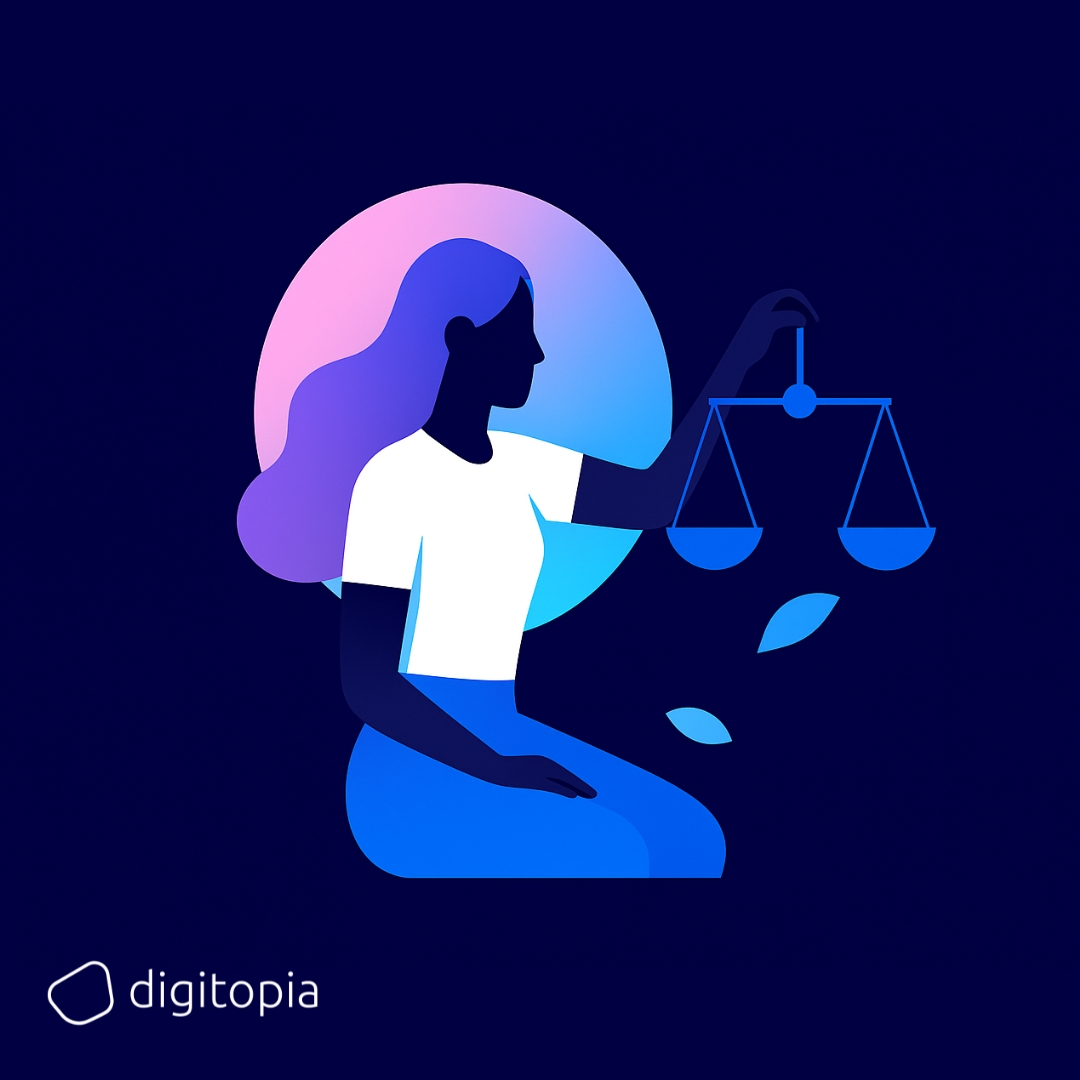
Ask any soccer fan, and they’ll tell you that the goalkeeper is in one of the toughest positions. A striker who misses a shot might get a few groans, but the game continues. Yet if a goalkeeper concedes a goal, they’re immediately in the spotlight—accused of poor performance, even if the rest of the team’s defense collapsed. CIOs often find themselves in a similar predicament. They guard the company’s core systems, data, and overall technology infrastructure. If everything runs smoothly, they’re barely noticed. If anything goes wrong—downtime, security breach, cost overruns—they’re under fire.
But in modern business, technology is no longer just about “keeping a clean sheet.” It’s about going on the offense—using technology to outmaneuver competitors, delight customers, and open new revenue streams. The CIO must not only keep the digital fortress secure and stable but also show the rest of the business how technology can drive growth, innovation, and massive efficiency gains.
The story you’re about to read follows Emily Carter, who started her career as a junior developer. Over time, her unique blend of technical skill, business savvy, and leadership potential led her up the ranks—eventually becoming the CIO, then rising further to become the CEO. Like a goalkeeper who learns to move up the field, Emily shows how a tech leader can not only defend the business but also help it score remarkable goals.
The Early Days—A Developer with a Passion
Emily Carter’s fascination with technology began in her teenage years. She taught herself to code in Python and Java, eventually earning a software engineering degree. After graduation, she landed a job as a junior developer at Orion Aerospace Solutions—a mid-sized company that specialized in advanced materials and components for airplanes and space vehicles.
Her first assignments involved debugging legacy code, refactoring clunky modules, and writing small features for an internal inventory system. She quickly gained a reputation for meticulous attention to detail, anticipating potential pitfalls, and quietly solving problems before they ballooned.
But it wasn’t just the code that intrigued her; it was the bigger picture. Emily wanted to know how these systems influenced warehouse processes, supplier relationships, and profit margins. She attended cross-department meetings out of curiosity, learning the language of logistics, procurement, and cost accounting. While many of her developer peers stayed in the comfort zone of pure coding, Emily was already pushing herself to understand how technology fit into the broader business puzzle.
Becoming a Solution Architect—Bridging Tech and Business
After about three years at Orion, Emily’s knack for broader system thinking landed her a role as a Solution Architect. She was tasked with designing integrations between the company’s enterprise resource planning (ERP) software and various satellite applications in finance, logistics, and HR. This role forced her to develop stakeholder management skills—coordinating with multiple department heads, clarifying requirements, managing timelines, and translating “IT speak” into business language.
She soon discovered a persistent pattern: Most departmental leaders didn’t care about the technical details. They cared about the outcomes—speed, reliability, cost savings, and data accuracy. Even so, they found it challenging to communicate what they needed, lacking the right vocabulary to describe their business requirements in technical terms. Similarly, IT teams often threw out jargon about APIs, data models, and containerization—leaving business folks with glazed eyes.
Emily made it her mission to bridge this gap. She introduced simple diagrams to illustrate how data flowed from one system to another, and how a glitch in one place could cascade into other processes, ultimately affecting on-time delivery or revenue forecasts. As she refined these communication skills, her credibility soared. She transformed from a backroom coder to a cross-functional problem solver—someone who understood that technology was at its most valuable when it aligned perfectly with strategic objectives.
The CIO Role—From Defense to Offense
Impressed by Emily’s success as a solution architect, Orion’s leadership offered her the position of Chief Information Officer at the age of 35—an unusually young age for such a role in the aerospace sector. She inherited a sprawling infrastructure: legacy mainframes, off-the-shelf ERP modules, and a patchwork of custom integrations. The prior CIO had been risk-averse, focusing on stability over innovation. While systems rarely crashed, they also didn’t keep pace with market opportunities.
Emily was determined to flip the script. She certainly appreciated the importance of defense—ensuring data security, compliance, and uptime. But she also believed that technology could be a competitive differentiator. She restructured her IT team, dedicating half of the resources to “run” and half to “grow.” The “run” side focused on protecting and maintaining the core systems, while the “grow” side prioritized projects that improved business agility, launched new products, or unlocked revenue streams.
The Soccer Analogy
She communicated this new model to the executive committee using a soccer analogy:
Goalkeeper (IT Ops & Security): Keeps the business safe, ensures no big failures.
Midfielders (Data & Integration Teams): Distribute the ball (data) quickly and accurately to the players who can leverage it.
Strikers (Innovation & Product Teams): Develop new offerings, features, or services that drive home the win—i.e., revenue, cost savings, or customer delight.
This simple framework resonated with non-technical leaders. They realized the CIO wasn’t just an IT caretaker—she was effectively the team captain who could orchestrate defensive and offensive moves. She pitched ambitious projects: predictive analytics for inventory optimization, a real-time customer portal for order tracking, and an AI-driven quality control system. Where her predecessor would have said, “We need more servers,” Emily said, “We can increase revenue by 10% if we predict stockouts more accurately and fulfill orders faster.”
Speaking the Language of Business
Emily had learned a crucial skill: business fluency. She explained technology projects in terms of return on investment (ROI), time to market, cost reduction, and customer satisfaction. She recognized that CFOs and COOs responded better to financial metrics and performance indicators than to references about code refactoring or microservices architecture.
During one key budget cycle, she proposed replacing a set of outdated servers with a cloud-based platform. Instead of “we need the cloud for more scalability,” she said, “Moving to the cloud will reduce total cost of ownership by 30% and allow us to experiment with new product configurations more quickly, giving us a 3-month edge on our closest competitor.” The CFO immediately warmed up to the idea, and the CEO greenlit the transition. Over the next six months, Orion saw dramatic performance improvements, plus the ability to spin up pilot environments on demand for R&D teams.
To the surprise of many, the “IT department”—once relegated to maintenance tasks—now sat at the center of Orion’s strategic planning. Emily’s emphasis on metrics also helped bolster her negotiating power with vendors and partners. She insisted they provide clear performance guarantees tied to Orion’s strategic goals.
Transforming the Organization—Aligning Tech with Strategy
Over the next few years, Emily orchestrated several large-scale digital transformations:
Real-Time Quality Control: By embedding sensors in manufacturing lines, Orion collected real-time data on defects. An AI-driven analytics solution cut defects by 25% within the first year.
Integrated Supply Chain: Using advanced forecasting models, Orion aligned supplier lead times more precisely with production schedules, reducing stockouts and cutting inventory costs.
Digital Customer Experience: She championed a customer portal that gave clients real-time visibility into order statuses, predictive maintenance schedules, and direct communication with engineers—significantly increasing customer satisfaction scores.
Each transformation wasn’t merely a technology upgrade; it was a cross-functional initiative involving operations, finance, sales, and marketing. Emily’s leadership style fostered collaboration. She assembled project squads that combined IT people with business SMEs (subject matter experts). This bridging tactic prevented the “us vs. them” dynamic that often plagues large organizations, ensuring co-ownership of goals and results.
By her fourth year as CIO, Orion posted record profits, attributing much of the success to improved operational efficiencies and new digital revenue streams. Emily had effectively moved the organization from playing defensive soccer—always afraid of losing customer trust due to IT slowdowns—to an offensive style—constantly innovating, launching fresh features, and outpacing competitors.
Becoming CEO—From Tech Catalyst to Business Leader
At 40, Emily was promoted to CEO after the retiring leader recommended her. Some board members expressed reservations: “A CIO stepping into the CEO seat? That’s unprecedented here.” But her track record spoke volumes. As CIO, she had proven her capacity not just to keep the engine running, but to drive strategic gains in profitability, market positioning, and product innovation.
Initial Challenges
In her new role, Emily faced two main hurdles:
Shifting Perspectives: She now had to manage not just the technology function but all aspects of the business—sales, marketing, regulatory compliance, R&D, investor relations, and more.
Winning Over Skeptics: Some executives questioned whether a tech specialist could lead high-level partnership negotiations or handle sensitive financial decisions.
She tackled these challenges by emphasizing the same principle that had propelled her career: technology is a means to a business end. She established an open-door policy, spending the first 90 days meeting with every department leader to learn their aspirations, pain points, and concerns. She also performed a thorough market analysis, identifying key trends—like the move toward fully autonomous drones for space station maintenance—that might reshape Orion’s future.
A New Level of Performance
As CEO, Emily injected a fresh vision: “Outsmart, Outbuild, Outdeliver.” This mantra guided Orion’s strategy in three domains:
Outsmart: Develop or partner on cutting-edge tech that reduces environmental impact, speeds production, and solves customer challenges in advanced aerospace segments.
Outbuild: Optimize manufacturing processes using robotics, 3D printing, and AI-driven quality checks, reducing costs and production time.
Outdeliver: Delight customers by constantly adding features or improvements—through agile software releases, predictive maintenance, and real-time collaboration.
Under Emily’s leadership, Orion formed alliances with forward-thinking tech startups, forging a pipeline of next-gen solutions for major commercial aircraft manufacturers. She also invited strategic customers to co-create product enhancements—a departure from the old approach, where Orion designed everything in a silo. This collaborative ethos accelerated R&D and ensured that new products perfectly matched customer needs.
By the end of her second year as CEO, Orion’s revenue had jumped by 40%, and net margins were at a historical high. Even the board skeptics admitted that her tech-centric approach to business strategy had elevated Orion beyond its legacy competitor set—allowing the firm to compete with giants previously thought untouchable.
The Keys to Emily’s Success
Emily’s meteoric rise from developer to CIO, then to CEO, is no fluke. She leveraged a set of consistent principles throughout her journey:
Speak the Language of the Business
Even as a developer, she cared about how software impacted real-world outcomes. That focus on ROI, operational metrics, and strategic alignment made her invaluable to every executive she encountered.
Combine Defense and Offense
Like a resourceful goalkeeper who can distribute the ball effectively, she protected the company’s core (security, stability) while enabling new offensive moves (innovative solutions, new products, new revenue streams).
Invite Cross-Functional Collaboration
She avoided silo mentalities, forming squads that blended IT pros with business leads. Everyone was invested in success, so everyone worked together to solve problems.
Stay Curious
Emily never stopped learning—about finance, operations, marketing, or emerging technologies. This growth mindset helped her evolve from a technical expert into a well-rounded executive.
Lead With Empathy
She listened carefully to concerns, whether from line managers worried about workload or top executives anxious about changes in direction. By addressing emotional and practical needs, she smoothed transformations that could otherwise have been turbulent.
Unite the Organization with a Vision
Whether it was “run and grow” for the IT department or “Outsmart, Outbuild, Outdeliver” as CEO, she gave people a rallying cry that transcended day-to-day tasks, fueling bigger-picture thinking.
Lessons for Aspiring CIOs and CEOs
Don’t Just Protect—Enable
Many CIOs remain in a purely defensive stance. Yes, you have to block threats, ensure compliance, and keep the lights on. But the real value emerges when you actively shape the company’s growth strategy.
Learn Finance, Operations, and Sales
To speak confidently at the executive level, you must understand how technology influences the P&L, supply chain costs, and revenue generation. Equipping yourself with knowledge beyond IT builds the trust necessary to move into senior leadership.
Show Tangible, Measurable Value
Every initiative you propose should have clear metrics tied to business objectives. Move from “we need new servers” to “this upgrade will reduce downtime by 20% and save us $2 million annually.”
Inspire Collaboration, Don’t Enforce It
If you dictate processes without buy-in, you’ll face resistance. Instead, bring business stakeholders in early, get their input, and co-design solutions. They’ll advocate for your initiatives because they helped build them.
Maintain Tech Credibility, but Prioritize Business Outcomes
You’ll always need enough technical understanding to gauge feasibility and spot potential pitfalls. However, never forget that the primary reason for any technology project is to drive business value—faster processes, lower costs, new revenue lines, or stronger customer loyalty.
Embrace the Offense Mindset
The next wave of CIOs must think like entrepreneurs, looking for ways to innovate and differentiate, not just to maintain. Companies that fail to capitalize on technology for competitive advantage risk falling behind quickly.
The Power of Tech Leadership in the CEO Seat
Emily Carter’s evolution symbolizes a broader trend: as digital transformation becomes imperative in every sector, technology leaders are well-positioned to take on broader leadership roles. Their understanding of data, product cycles, user experience, and efficiency can shape corporate strategy profoundly.
Many boards now seek CEOs who “get tech”, not just as a utility but as a strategic weapon. Emily exemplifies how a leader steeped in technology and data can inspire new business models, faster go-to-market cycles, and a culture of continuous innovation. And in a world where “software is eating the world,” that edge can be the difference between mediocrity and greatness.
The Goal Is to Score—and Win
The soccer analogy reminds us that while it’s crucial to defend your goal, you can’t win without going on the offensive. Likewise, a CIO who only focuses on blocking security threats and keeping systems stable misses the broader opportunity to transform the enterprise. Emily Carter’s story is proof that with the right mindset, skill set, and leadership style, someone starting at the developer level can ascend through the ranks, ultimately guiding an entire organization to stellar performance.
Final Takeaway: Regardless of your current role—be it developer, team lead, or CIO—aim to understand the game beyond your penalty box. Look for ways technology can drive revenue, expand market share, or create breakthrough efficiencies. Speak the language of your business colleagues, pair your technical insights with strategic acumen, and you might just find yourself leading your own team to an unforgettable championship run.
From Defense to Offense in Your Own Career
Audit Your Communication: How often do you talk about the “why” (business outcome) instead of the “what” (technical feature)? Shift the ratio in favor of business impact.
Learn the Non-Tech Domains: Spend time understanding finance, marketing, and operations. Could you explain your company’s strategic priorities as clearly as your CFO or COO?
Build a Winning Team: Identify the defensive positions (infrastructure, security) and the offensive positions (innovations, R&D). Make sure you have the right people in both camps, and help them collaborate effectively.
Engage Stakeholders Early: Before launching any major initiative, bring in at least one stakeholder from each affected department. Let them shape the requirements, timeline, and success metrics.
Champion Business-First Thinking: Always tie technology decisions back to specific metrics—revenue, cost savings, customer satisfaction, brand reputation. Make it clear you’re not just defending the net, but helping the organization score game-winning goals.
In an era where technology fuels every aspect of modern enterprise, executives like Emily Carter show us that the best goalkeepers can become star strikers—and even team captains—when they learn to speak the business language and fully harness the power of tech. If you adopt her mindset and methods, there’s no limit to what you can achieve.













